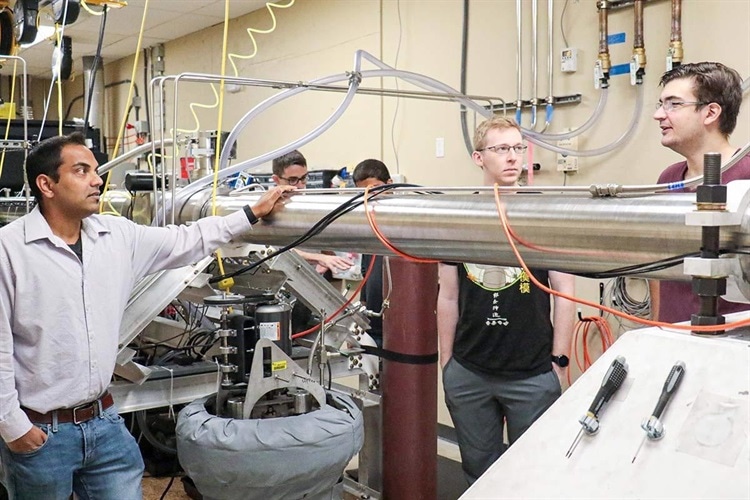In 2011 many scientists, and executives from the oil and automobile industries, believed the energy source for the future was hydrogen. Most of the attention was focused on fuel cells that combine hydrogen and oxygen to produce electricity and emit water vapor into the atmosphere. As long as you did not use fossil fuels in the production of hydrogen, there would be no CO2 released. Another feather in it’s cap is that it produces more energy per gram than any other source of fuel – which would make it an excellent choice for aviation fuel. But there are challenges…
- it is found combined in other compounds – such as water, methane, and gasoline. So, it will take a lot of energy to produce it. More so than oil or coal.
- The electricity is produced in fuel cells, which can also be expensive.
- Whether this form of energy actually decreases CO2 levels would depend on how the hydrogen is extracted.
In 2011 there were several methods of storing hydrogen that were considered safe. Some were in operation, some were in development. It could be stored in a liquefied form or within compounds. Each of these methods posed no threats to catching fire, making their storage safer than fossil fuels. The automobile industry had developed prototypes of cars, trucks, and buses at the time. One engineer was working on a system that used pellets of aluminum-gallium alloy in water that could produce hydrogen. This could be done with the current gasoline tanks and would only require switching the fuel injector with a hydrogen injector and off we go. Large fuel cells could be used to heat and power buildings and homes. So, what happened? Why, in 2025, do we not see more of this source of energy in our lives?
Several fossil fuel industries, such as ExxonMobil, Shell, and others, continue to state that hydrogen is in their future. The U.S. Energy Information Administration mentions that it is currently being used in industrial processing. They also mention fuel cells are currently being used to produce electricity for buildings and facilities – but as a backup source. Most of the fuel cells are using natural gas as the source of hydrogen – but some use biofuels generated from wastewater treatment plants, or landfill gas. In 2022, hydrogen still produced less than 1% of the country’s energy.
The high cost of fuel cells, and the limited number of hydrogen refueling stations, have hampered the development of fuel cell vehicles. It has been stated that people are reluctant to buy fuel cell cars if there are no refilling stations. And companies are reluctant to build refueling stations if there are no customers to use them. There are currently 60 hydrogen refueling stations in the country, all are in California. So, there has not been much movement towards the use of hydrogen since 2011.
At this point in the series on Our Environment, we have discussed the origin of humans, our dispersal across the planet, our need for resources such as food, space, and water, and our need for energy. We have discussed how these needs have stressed the environmental systems that support us – and all other creatures, and some solutions to many of these problems. But we began the series because our actions have led us to climate change – and it is time to come full circle and discuss this – which we will do in our next article.
References
Miller, G.T., Spoolman, S.E. 2011. Living in the Environment. Brooks/Cole Cengage Learning. Belmont CA. pp. 674.
Hydrogen Explained; Use of Hydrogen. 2024. U.S. Energy Information Administration. https://www.eia.gov/energyexplained/hydrogen/use-of-hydrogen.php.
- St. Joe Red Tide Claiming Terrapins - December 15, 2025
- The 2025 Snake Watch Report for the Pensacola Bay Area - December 15, 2025
- Rattlesnakes on Our Barrier Islands; Part 2 – Prey Selection - December 15, 2025


